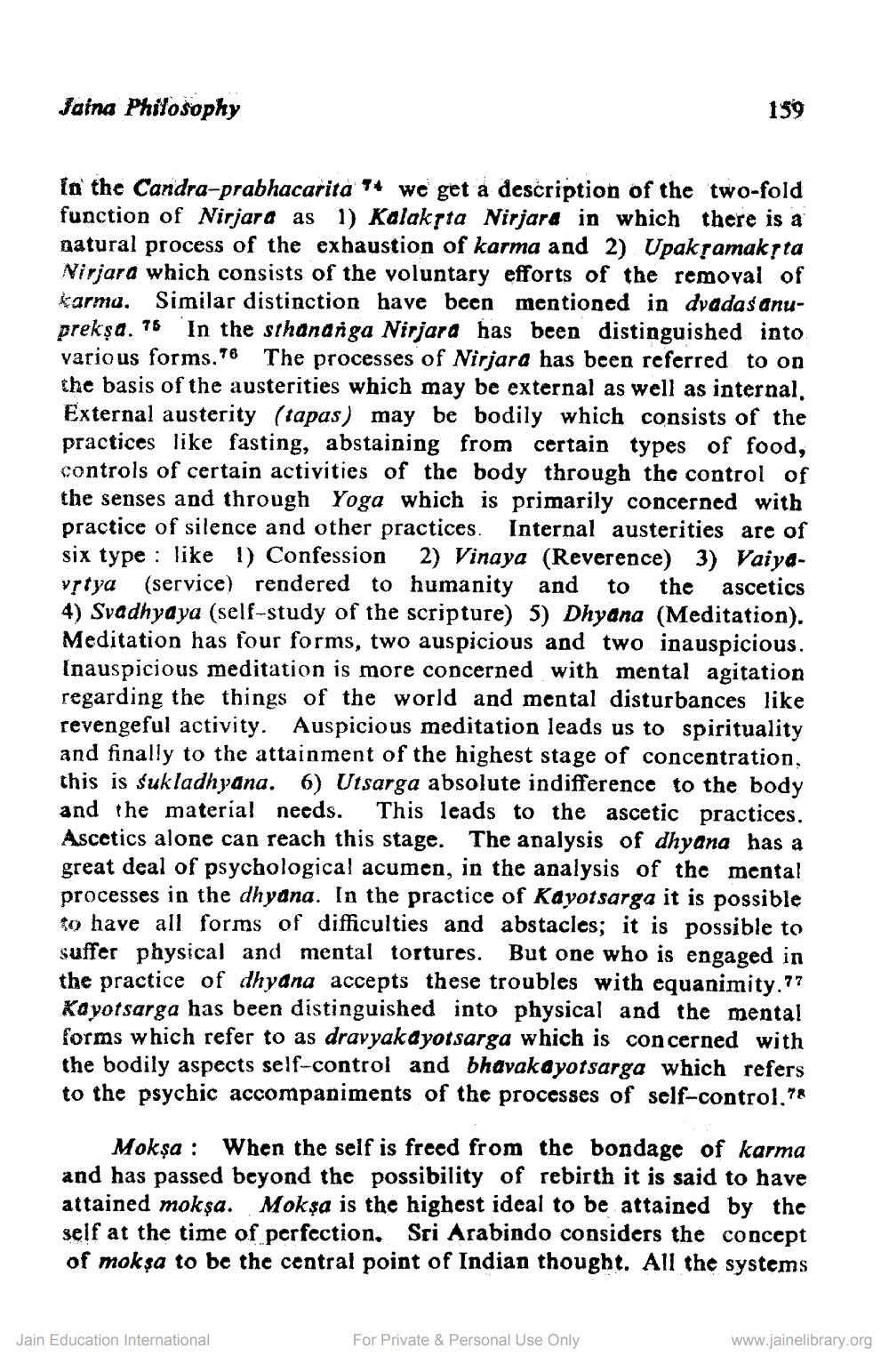________________
Jaina Philosophy
In the Candra-prabhacarita 74 we get a description of the two-fold function of Nirjara as 1) Kalakṛta Nirjara in which there is a natural process of the exhaustion of karma and 2) Upakṛamakṛta Nirjara which consists of the voluntary efforts of the removal of karma. Similar distinction have been mentioned in dvadas anuprekṣa. 75 In the sthananga Nirjara has been distinguished into. various forms.76 The processes of Nirjara has been referred to on the basis of the austerities which may be external as well as internal, External austerity (tapas) may be bodily which consists of the practices like fasting, abstaining from certain types of food, controls of certain activities of the body through the control of the senses and through Yoga which is primarily concerned with practice of silence and other practices. Internal austerities are of six type: like 1) Confession 2) Vinaya (Reverence) 3) Vaiyavṛtya (service) rendered to humanity and to the ascetics 4) Svadhyaya (self-study of the scripture) 5) Dhyana (Meditation). Meditation has four forms, two auspicious and two inauspicious. Inauspicious meditation is more concerned with mental agitation regarding the things of the world and mental disturbances like revengeful activity. Auspicious meditation leads us to spirituality and finally to the attainment of the highest stage of concentration, this is sukladhyana. 6) Utsarga absolute indifference to the body and the material needs. This leads to the ascetic practices. Ascetics alone can reach this stage. The analysis of dhyana has a great deal of psychological acumen, in the analysis of the mental processes in the dhyana. In the practice of Kayotsarga it is possible to have all forms of difficulties and abstacles; it is possible to suffer physical and mental tortures. But one who is engaged in the practice of dhyana accepts these troubles with equanimity.77 Kayotsarga has been distinguished into physical and the mental forms which refer to as dravyakayotsarga which is concerned with the bodily aspects self-control and bhavakayotsarga which refers to the psychic accompaniments of the processes of self-control."8
159
Mokṣa: When the self is freed from the bondage of karma and has passed beyond the possibility of rebirth it is said to have attained mokşa. Mokṣa is the highest ideal to be attained by the self at the time of perfection. Sri Arabindo considers the concept of moksa to be the central point of Indian thought. All the systems
Jain Education International
For Private & Personal Use Only
www.jainelibrary.org




